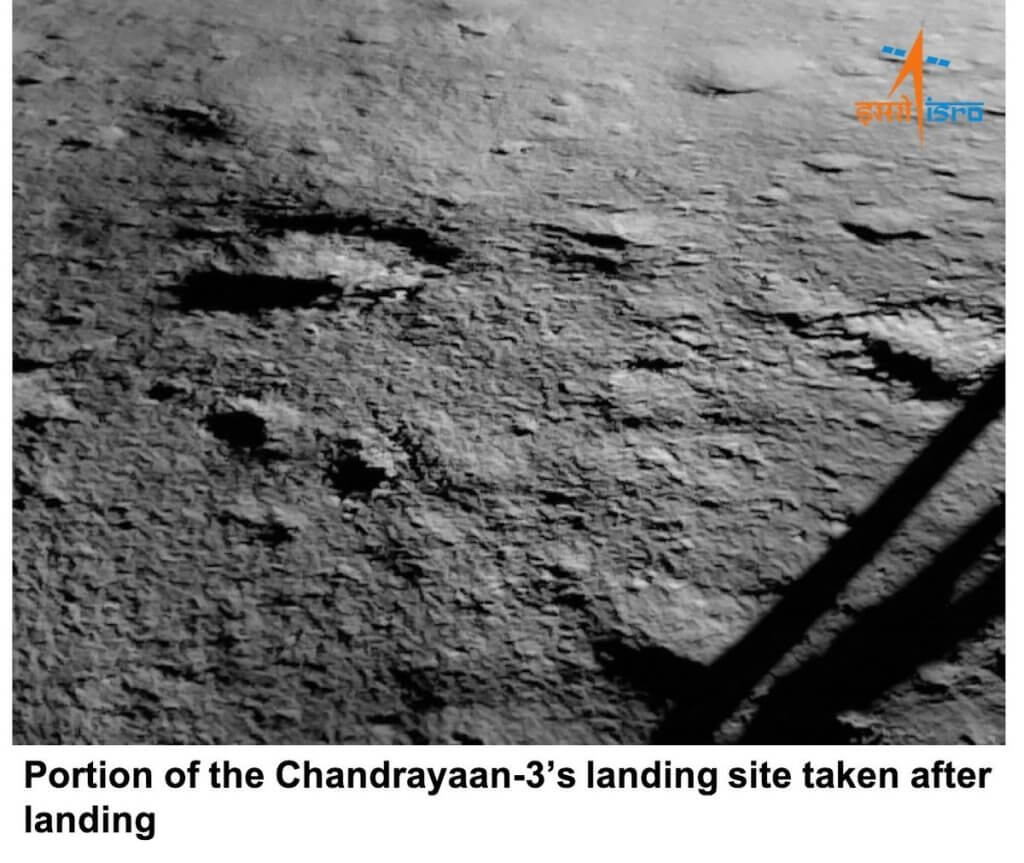
What’s next for India’s Chandrayaan-3 mission on the moon? (Image Credit: Space.com)
The moon’s south polar region has welcomed its very first visitor.
Despite the numerous craters and trenches that scar the region, India’s robotic Chandrayaan-3 spacecraft touched down softly as intended yesterday (Aug. 23) in its relatively flat landing spot between the Manzinus C and Simpelius N craters, located about 70 degrees from the moon’s south pole.
The spacecraft’s propulsion unit, a box-shaped module that had ferried Chandrayaan-3’s lander-rover duo into a tight orbit around the moon and separated from it prior to the landing, continues to circle Earth’s nearest neighbor. The module is equipped with only one scientific instrument, named SHAPE (Spectro-polarimetry of Habitable Planet Earth), which is meant to study Earth from lunar orbit, in effect mimicking observations of a distant exoplanet.
Related: India on the moon! Chandrayaan-3 becomes 1st probe to land near lunar south pole
Most of the world’s attention, however, is on the moon’s surface. Shortly after the lander Vikram touched down on the moon, it established communications with mission control in Bengaluru, India, according to the Indian Space Research Organisation (ISRO).
And the space agency announced late yesterday on X (formerly Twitter) that the rover, Pragyan, successfully rolled off the lander via a short ramp and “took a walk on the moon.” That means the rover successfully deployed its own tiny solar panels to help it inch forward. It has two spectrometers onboard to study the makeup of lunar soil in the immediate area around the landing site.
Although the rover is equipped with cameras to avoid obstacles, its movements will be controlled at all times such that it trudges within the field of view of the cameras on the lander Vikram, ISRO has previously said.
Vikram also switched on three of its four onboard science experiments today (Aug. 24), according to ISRO. A particularly interesting instrument is a thermal probe that will, for the first time, shallowly probe lunar soil and measure its temperature, among other properties.
A second Vikram instrument will study a layer of the moon’s tenuous atmosphere known as the ionosphere, which is filled with electrons and ions formed largely as a result of solar radiation. Scientists say this probe will help determine whether the ionosphere is compactly packed at all times or if its density changes over time and varying sunlight conditions.
The third experiment is a seismometer that will sense moonquakes near the landing site, while the fourth payload is a passive laser retroreflector array by NASA to “understand the dynamics of the moon system.”
Scientists are eager to collect as much science as they can in the next two weeks, because neither the lander nor the rover is designed to withstand a bitter night on the moon, when polar temperatures drop to minus 382 degrees Fahrenheit (minus 230 degrees Celsius) or less.
So when shadows engulf the lander Vikram and rover Pragyan after the sun sets, it won’t be a surprise if they go incommunicado.





